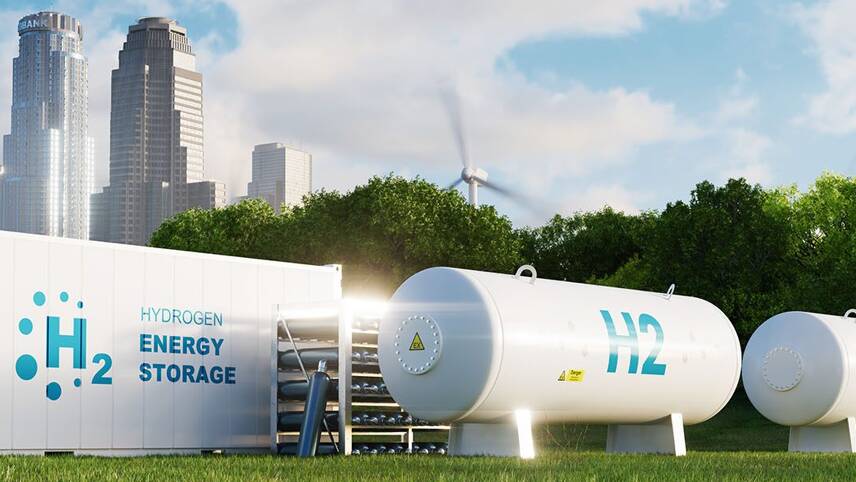This is the Sponsored paywall logged out

Hydrogen is the most abundant element in the universe. When combined with carbon capture technology or produced using renewable sources, it could serve as a carbon-neutral alternative to natural gas. However, hydrogen and its role in Britain's energy future have been subject to frequent debates and uncertainties from energy experts. The extent of its role in decarbonising our gas network is still up for debate, with a decision on hydrogen blending being a key milestone for its potential rollout.
To achieve the government’s goal of producing up to 10GW of low-carbon hydrogen capacity by 2030, hydrogen blending and trials are necessary, even if they are to rule out hydrogen heating for domestic use. Introducing a new fuel source without these steps is not an option, given the stakes involved in securing the future of our planet.
With uncertainty still in the air – is Britain ready for hydrogen blending?
Managing costs
For many future hydrogen blending customers, a primary concern is cost. At this time, there is no set price for hydrogen. Yet, it is reasonable to assume that if natural gas is used to produce blue hydrogen or solar and wind to produce green hydrogen, it will likely be more expensive.
Based on this reasoning, some experts believe hydrogen blending isn’t a viable solution, however, it’s crucial to see it as part of the long game. Hydrogen blending is an important stepping stone in scaling up hydrogen production for use in industry, power generation, transportation, and heating our homes, eventually allowing costs to fall.
For now, questions around cost are difficult to answer. However, as we work towards a net-zero solution, it’s important that these interim costs don’t financially disadvantage customers. Whatever route is ultimately taken, it needs to be cost-effective for consumers and ensure we avoid any future energy crisis or a rise in fuel poverty.
Building infrastructure
If the government decides to take forward hydrogen blending, the crucial next step is to create the necessary infrastructure to support its uptake. Maintaining a 100% methane-based gas system and achieving net-zero emissions is impossible. However, the gas network could utilise the current infrastructure to support low-carbon gas and gas networks have been upgrading lines with new “hydrogen-ready” pipes for several years.
Currently, there is a limited supply of low-carbon hydrogen available. Introducing blending allows for the production of hydrogen at a larger scale, making it more accessible to our networks. Initially, blending will likely begin near industrial clusters, over time, expanding on a larger scale and with it the production of hydrogen to meet government targets.
The need for policy and plan
Alongside cost and infrastructure, we also need policy and framework. Hydrogen blending is a necessary step for the government to evaluate hydrogen’s role in domestic heating. Any energy code expert will tell you, how complicated introducing new aspects to the energy code can be, and we encourage any stakeholders who might be impacted by hydrogen blending to get involved with the commercial framework review to enable Hydrogen blending. The more representation, the better the industry can understand what’s best when it comes to hydrogen blending.
The UK’s transition towards a low-carbon future is undeniable, but cannot occur overnight. Renewable energy and natural gas need to work in tandem in the short term, like two trains passing in the night, until a clear plan from the government on meeting energy demands with carbon-neutral energy is made.
One thing is certain, no single fuel can solve the current energy crisis. A combination of energy sources is required, but there is still uncertainty about the ideal mix. It’s crucial the government, with industry support, act quickly and reach a consensus, or else Britain may not have the necessary infrastructure and framework ready to support a new energy market.
Short-term carbon reduction
In 2050, we’re not going to be able to have the natural gas network we have now; it’s simply not compatible with where we need to get to. Change is afoot, but gas still has an important role to play in the energy transition – whether it’s with hydrogen, biomethane or methane with carbon capture, and it’s something we need to embrace.
It remains uncertain whether hydrogen blending represents the most effective means of reducing carbon emissions in the gas network in, the long term. By combining hydrogen with methane at levels up to 20%, we have the ability to reduce carbon dioxide emissions by roughly 6 million tonnes annually – equivalent to removing 2.5 million cars from the road. Therefore, although hydrogen blending is not likely a permanent solution, pursuing this approach is by no means a futile endeavour and would be a great first step to reducing carbon emissions within the gas network.





Please login or Register to leave a comment.